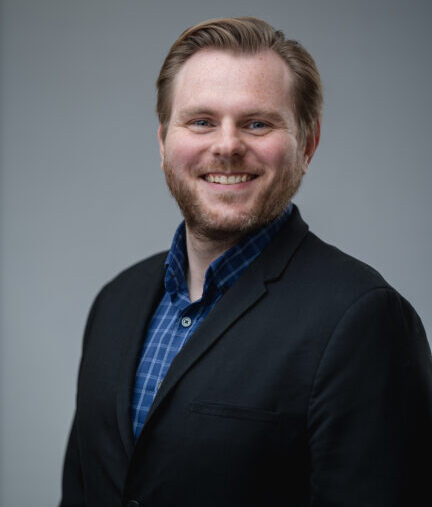Stephen Taylor elected NANOGrav collaboration chair

Stephen Taylor, assistant professor of physics and astronomy, has been elected to a two-year term to NANOGrav, an international collaboration dedicated to exploring the low-frequency gravitational wave universe through pulsar timing. See the Q&A below to learn more about Taylor’s research and NANOGrav.
Can you tell us a little about the type of research you do?
My research involves exploring the universe using gravitational waves. These waves are ripples in the fabric of space-time that are sent out by extremely massive and dense astrophysical systems like pairs of orbiting black holes. They were only discovered in 2015, but were predicted a century before that by Einstein. My group is developing models and techniques to catalyze the discovery of gravitational waves from the most massive black holes in the universe.
What is NANOGrav and what is its impact?
Gravitational waves from pairs of the most massive black holes in the universe cannot be detected using instruments on Earth. Instead, we make galaxy-sized detectors called Pulsar Timing Arrays (PTA).
NANOGrav (the North American Nanohertz Observatory for Gravitational waves) is one such PTA. We observe special types of rotating neutron stars called pulsars that send out beams of radio waves that we detect using radio telescopes on Earth. Their rotations are so regular, that we can use them almost as clocks in the sky. When a gravitational wave passes through our galaxy, it upsets the space-time, causing radio pulses to arrive on Earth earlier or later than expected. Indeed, the timing offsets from vastly-separated pulsars across the galaxy will share commonalities.
NANOGrav previously discovered signatures in its data that may be the first signs of an emerging background hum of gravitational waves from every pair of supermassive black holes in the universe. We are now investigating our newest dataset in a bid to know for sure and to make the decisive breakthrough. Time will tell!
PTAs like NANOGrav are the only way we can see these most massive black hole systems. That’s because we detect waves in a different part of the spectrum than instruments like LIGO (Laser Interferometer Gravitational-wave Observatory). In a way, if you translate to the electromagnetic spectrum, LIGO sees in the visible and we see in the radio.
Congrats on being named NANOGrav Collaboration Chair! What does this new role mean to you and what type of responsibilities does it carry?
Thank you! It’s a big honor, and a humbling vote of confidence in my leadership. I owe a huge debt to the mentorship that the collaboration has given me since I joined, and to the outgoing chair Scott Ransom at NRAO Charlottesville for conveying his experiences.
This role means that I am the primary point of contact for NANOGrav to the broader scientific community. It also carries strategic and administrative responsibilities to continue to propel the collaboration towards its scientific goals. Fortunately, I work with a very experienced team of other faculty and senior personnel around North America to get advice and counsel. I’m very excited to be in this role to help drive our science and other broader societal impacts over the next two years. We have access to data from some of the greatest telescopes in the world (including the Green Bank Telescope in West Virginia, the Very Large Array in New Mexico, and the now-out-of-commission Arecibo Telescope in Puerto Rico), and generous funding from the National Science Foundation and other partners, to pursue these ground-breaking goals.
